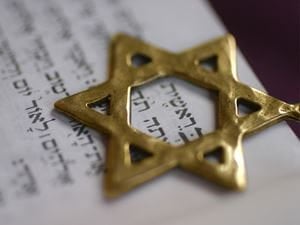
There's a lot going on during Passover. It's one of the most important holidays of the Jewish year and everything seems to have significance. So for those of you who are confused, overwhelmed, or just want to know more about this important holiday -this is a great read to clarify some of the most important elements of the holiday!
The Passover Story
The name “passover” comes from the Hebrew word “pesach” and refers to a significant event in Israelite history (you may have heard about it: the Exodus). The Israelite people had been kept as slaves by the Egyptian pharaohs and were seeking freedom. God became concerned for the plight of his people and spoke to Moses, telling him to go to the Pharaoh and ask for the freedom of the Israelites. When the Pharaoh refused, God sent 10 plagues to Egypt, destroying nearly everything.
God’s last plague was the murder of all firstborn children in Egypt. However, before executing this, God warned the Jewish people and told them that if they sacrificed a spotless lamb and smeared the blood on their doors, that the angel of death would Pass Over their homes and spare their firstborn children.
It was this last plague that spared only the Israelite households that convinced the Pharaoh to set the Jewish people free.
Chametz (Leavened Grains)
Chametz is leavened grain. But what exactly is leavened grain and why is it not allowed during Passover?
Leavened grain is food that is made with wheat, barley, oats, rye, or spelt that has been allowed to ferment (fermentation is believed to get going 18 minutes after a grain has been exposed to moisture - so time is of the essence!). Yeast is not necessarily bad, but yeast that has been allowed to ferment (and rise) is. However, wine, which is fermented grape, is allowed-and encouraged-in the home and at the seder (except Karaite Jews avoid wine because of the whole fermentation thing, and instead drink fruit juice).
The reason that Chametz must be ritually cleansed from the home before Passover is because it reminds observants of the hasty exodus of their ancestors. When the Israelites were freed from the Egyptian pharaoh, Moses urged them to flee so quickly that they did not even have time to let their bread rise.
Today, all Chametz in the house is gathered and sold to a non-Jewish friend. At the end of Passover, the Chametz is bought back and restored to its former home in the pantry.
Matzah
In lieu of Chametz, there is Matzah: unleavened bread made with just water and special flour (called “shmurah” -- flour that has absolutely, for sure, no-question-about-it, never ever never been exposed to moisture). The flour and water are kneaded, rolled out, perforated, and baked within 18 minutes (remember that whole 18 minute rule?).
Seder
The Seder meal is a ritual reenactment (of sorts) of the story of the Jewish people of Egypt. In Israel the Seder occurs on the first night of Passover, but everywhere else in the world Seder is observed on both the first and second night of Passover.
During the course of the meal, those in attendance are taken through the whole story of the Jewish people (the Haggadah), starting with the patriarchs (Abraham, Isaac, and Jacob), and ending with their miraculous salvation and exodus. No part of the evening is without significance as every element represents the pain and/or strength of the Israelites under Egyptian rule and their ultimate salvation through God.
The most important parts of the night include the special consumption of items on the Seder Plate, the reading of the Haggadah, the drinking of four cups of wine, and the breaking and eating of matzah.The Seder Plate
Part of the Seder involves a plate with meaningful food items chosen specifically for the occasion. See this interactive photo of a traditional Seder plate here - scroll over items to find out what they are and where they fit in to the ritual.
Fun fact: You might see an orange on more progressive Jewish household's Seder Plates. This is a fairly new tradition started by Jewish feminist, Susannah Heschel. She came up with the idea of putting an orange on the seder plate to represent the fruitfulness of the Jewish community when it includes marginalized people, like LGBTQ people.

